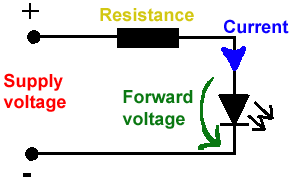MALZEME LİSTESİ
R1________________470R 1/4W Direnç
R2,R5______________10K 1/4WDirenç
R3,R6_____________220K 1/4WDirenç
R4__________________5K 1/2W Trimmer Cermet
R7________________680R 1/4W Direnç
R8__________________2K2 1/4WDirenç
R9,R10,R11,R12,R13__1K 1/4W Direnç
C1________________100µF 25V Elektrolytik Kondansatör
D1,D2,D3______3 or 5mm. Red LED
D4____________3 or 5mm. Green LED
D5____________3 or 5mm. Yellow LED
IC1_______________LM324 Düşük akım Quad Op-amp
P1_________________SPST Pushbutton
Probes_________________ (metin de gösteriliyor)
B1___________________9V PP3 PİL veya Akü
Güvenilir bir okuma elde etmek için en az 30 saniye bekleyin.
Her testten sonra probu dikkatle yıkayın ve silin.
Kurulum için 10V aralığı olan IC1A ve negatif 1 inci pine bağlı bir DC voltmetre kullanabilirsiniz Bu şekilde daha hassas okuma elde edilir.
R4 ayarlı direnci ile hassas ayar yapabilmek için probun ucunu tatlı suya batırarak sıfır ayarı yapılır.
Size eşik gerilim seviyelerini R4 Direncinin değerini değiştirerek D3 LED i kırparak yanacaktır . R8 değeri ni değiştirerek D4 LED inin ayarı yapılır ve R9 değerini değiştirerek D5 LED inin Hassasiyet aralığını değiştirebilirsiniz.
P1 buton Yerine ortak bir SPST anahtar da koyulabilir.
IC1A
op-Amp DC Akım direnci ölçülen çıkış voltajı arttıkça
Problarda yüksekdirenç azalır taze su eklenir bu orantılı olarak artan su
miktarı ile tuz miktarı azalacak ve bu tuz miktarı en az seviyede ise IC1B,
IC1C ve IC1D karşılaştırıcılar sayesinde D5 LED
i Yanacak Eğer D4 LED i Yanarsa
normal tuz miktarı D3 LED i yanarsa tuz miktarının aşırı artmış
olduğunu anlarız D1 ve D2 nin her zaman,
amacı iki referans gerilimi sağlamak, böylece devre hassasiyetini artırmaktadır. D2
de istikrarlı bir tedarik 3.2V anot olmayan referans direnç zinciri R8, R9 ve
R10 yoluyla karşılaştırıcıların girdiler tersini beslenir. 1.6V
referans gerilim D1 anot mevcut problar ve R4 beslenir.





Hiç yorum yok:
Yorum Gönder